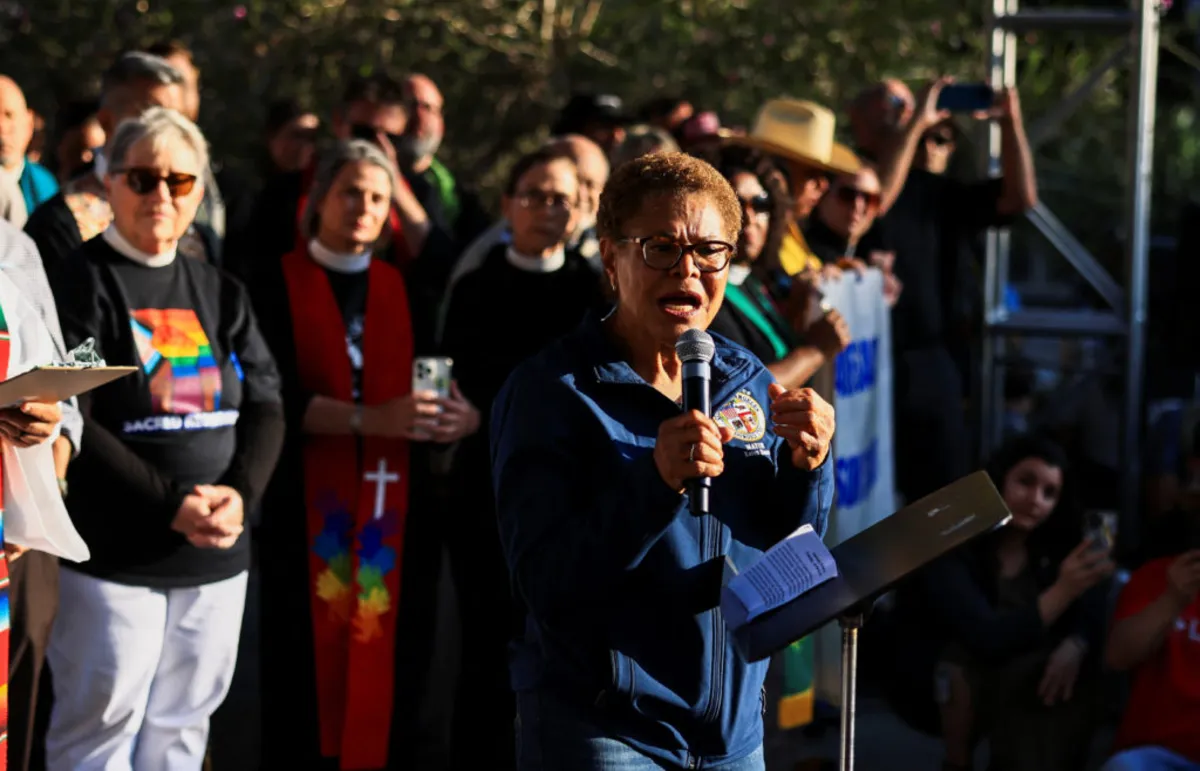
In a dramatic display of force, dozens of federal officers clad in tactical gear, alongside approximately 90 members of the California National Guard, were deployed to MacArthur Park on Monday. The operation, which lasted about an hour, took place in a neighborhood renowned for its large immigrant population. As the situation unfolded, it remained unclear whether any arrests were made.
Los Angeles Mayor Karen Bass described the scene in the park as resembling a “city under siege,” calling the operation a “political stunt.” Concerned for the safety of children attending a day camp in the park, she reported that the kids were quickly ushered indoors to avoid witnessing the overwhelming police presence. One child even expressed his fear of the Immigration and Customs Enforcement (ICE) agents, highlighting the anxiety that such operations instill in immigrant communities.
MacArthur Park is a vibrant area that serves as a cultural hub for Mexican, Central American, and other immigrant communities. Lined with businesses featuring signs in Spanish and various languages, the park is often referred to as the “Ellis Island of the West Coast.” The park features a murky lake, palm trees, an amphitheater for summer concerts, and sports fields where immigrant families gather to play soccer. Local vendors sell delicious food like tacos and other delicacies, creating a rich tapestry of cultural exchange.
During the operation, health care outreach workers, who were assisting homeless individuals in the park, reported being confronted by armed troops who ordered them to leave. Mayor Bass voiced her outrage, questioning the purpose of the military presence. “What are they in search of? They’re walking through areas where children play,” she stated, emphasizing the unsettling nature of the operation.
The operation took place approximately two miles west of downtown Los Angeles and involved 17 Humvees, four tactical vehicles, two ambulances, and armed soldiers. It is part of a broader strategy by the Trump administration to intensify immigration enforcement efforts. President Trump had previously deployed thousands of National Guard members and active-duty Marines to Los Angeles amid rising tensions over immigration raids.
In light of the operation, the Department of Homeland Security refrained from commenting on ongoing enforcement actions. Over 4,000 California National Guard members and hundreds of U.S. Marines have been stationed in Los Angeles since June, despite opposition from California Governor Gavin Newsom. Newsom condemned the military presence, labeling it “a spectacle” and asserting that the actions were not aimed at targeting dangerous criminals but rather undermining the state’s fabric.
Federal officials later clarified that the operation was not a military intervention, although they acknowledged its military-like appearance. They indicated that the primary objective was to provide protection for immigration enforcement officers in case of hostile crowds, stating that service members would not engage in law enforcement activities such as arrests but could temporarily detain individuals if necessary.
Local leaders expressed their concerns about the fear and anxiety sowed by the federal presence. Marqueece Harris-Dawson, president of the Los Angeles City Council, likened the scene to a staging for a “TikTok video,” criticizing the federal government for creating an atmosphere of terror in the community. Chris Newman, legal director for the National Day Laborer Organizing Network, described the operation as an escalation and a “reality TV spectacle” rather than a legitimate enforcement action.
As federal agents continue to conduct operations in various neighborhoods, many community members have reported feeling unsafe, contributing to a noticeable decline in attendance at parks and public spaces. Betsy Bolte, a nearby resident, expressed her distress over the military-style presence, stating, “It’s ripping the heart and soul out of Los Angeles.”
The events at MacArthur Park highlight the ongoing tension surrounding immigration enforcement in the United States, raising critical questions about the impact of such operations on local communities and the larger immigrant population.